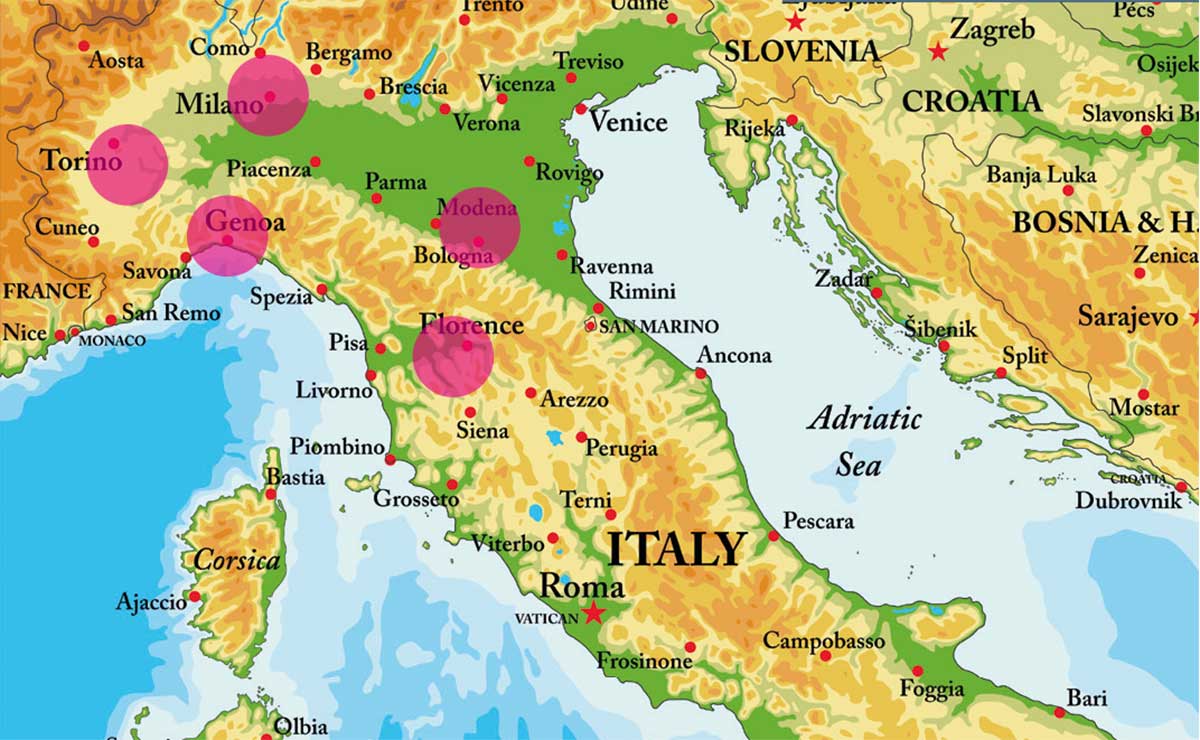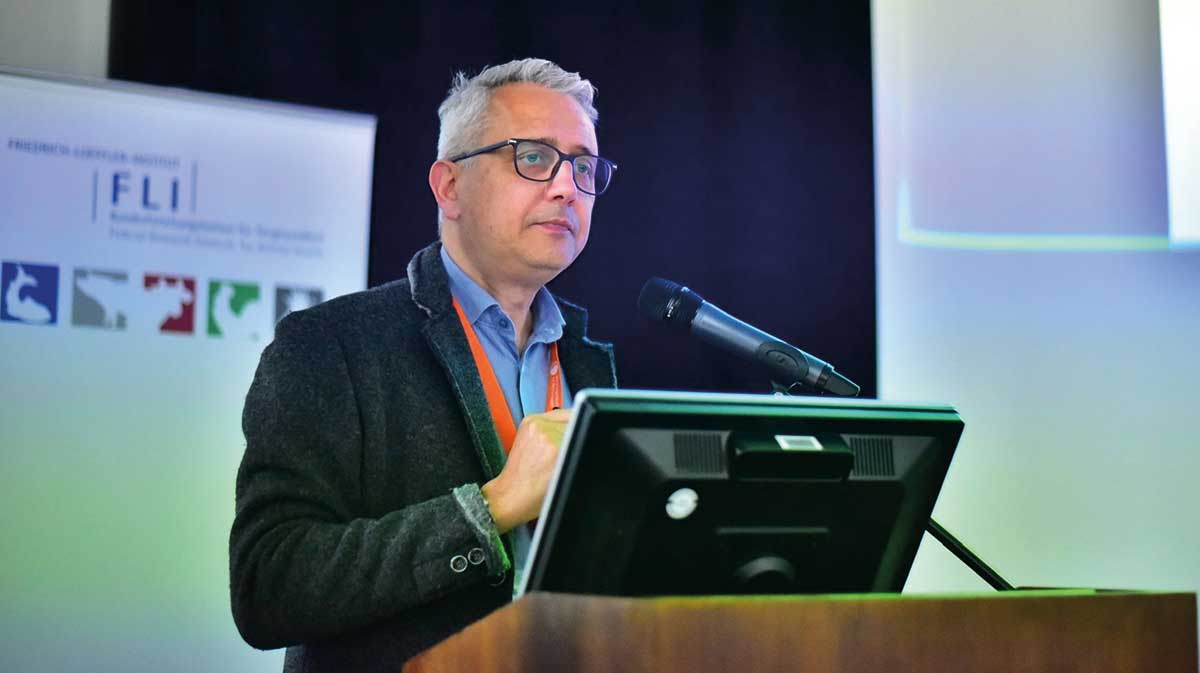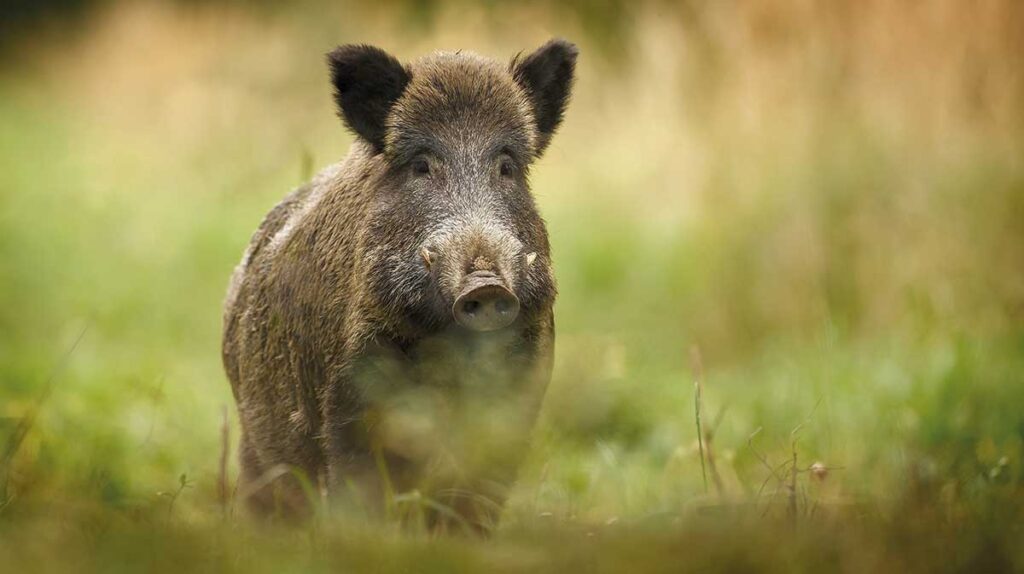For the past two years, Italy has been fighting an intense war with African swine fever (ASF), but there is still no sign of the enemy retreating.
In fact, since January 2022, over 120,000 pigs have been slaughtered, mainly in the north of the country, to try and control the spread of the dreaded disease.
On the economic front, ASF is costing Italy €20m per month in lost exports, and the country’s lucrative and iconic €20bn ham industry is under serious threat as the disease takes a firm grip on the sector, which has over 9 million pigs spread over around 4,000 farms.

Mixed picture
Dr Francesco Feliziani, head of Italy’s National Reference Centre for ASF, said the ASF situation in Italy was ‘very mixed’.
ASF was discovered in wild boar in Piedmont, Italy’s most north-western region, in January 2022, and has since spread across the north of the country.
While biosecurity measures have been stepped up, ASF is currently almost out of control in the Lombardy region – when it was discovered last autumn, more than 30,000 pigs were culled to try and contain it.
It has also spread Emilia Romagna, which, along with Piedmont, is a prime area for producing Parma prosciutto, as well as Liguria and Tuscany, in the north.
“We have some infection clusters that are currently active in our country. The most important is the north-west cluster, which has become quite large,” Dr Feliziani said.
“We then have a surveillance plan that is very deeply rooted in the territory, which allows us to guarantee the freedom of almost all Italian regions, and this allows us to safeguard national production.”
In May 2022, the virus was found in wild boar Rome, representing a big leap from northern Italy, and the following month, it was identified in domestic pigs in Rome’s Lazio region.
However, Dr Feliziani said the cluster close to Rome was now on ‘very favourable epidemiological trend’.
Similarly, the authorities consider the cluster in the Campania region, in the south-west, to be ‘well confined’, although it remains active. A further cluster in neighbouring Calabria has not registered positive cases for many months.
The irony of the recent rapid spread in parts of the country is that the island of Sardinia, where the virus has been endemic for 40 years, has recently been declared officially free of ASF genotype 1.

Wild boar spread
“Undoubtedly the fundamental problem is the endemic presence of the infection in the wild boar population, which has also sporadically affected domestic herds,” Dr Feliziani said.
“The situation is particularly complicated by the type of territory in the area, as the presence of impenetrable woods in the Apennine chain creates ideal conditions for the persistence of the infection and its spread.”
Since 2020, Italy has had a surveillance plan in place, which aims to ensure the early detection of new incursions of the virus in both the domestic and the wild sector.
“In the areas considered to be infected or most at risk, measures have been adopted in line with European legislation and in any case tailored to the environmental situation,” Dr Feliziani added.
“This means the measures applied in the north-west cluster are quite different from those applied in the municipality of Rome where the disease is present in an urban context.
Wherever possible, efforts have been made to build barriers to limit the dispersion of infected wildlife populations. The authorities have set out to control the wild boar population to reduce the size and density in areas where the virus is spreading, in a collaboration between veterinary services, wildlife agencies, and territorial surveillance
ASF restrictions on the movement of pigs and pig products have also been applied.

Huge economic hit
The loss of large export volumes of Italian pork products has come as a major blow to the country’ economy, let alone the pig sector.
Dr Feliziani said: “The costs resulting from the ASF outbreak are very high. In addition to the costs of slaughtering pigs, the costs of lost production and the destruction of potentially contaminated products must also be considered.
“It is estimated that Italy is losing €20m a month due to lost exports and this gives an idea of the costs we are incurring because of ASF.
“The entire pig supply chain is under pressure, especially in the areas where the virus has been found on farms. But the whole sector is suffering. Many breeders have decided to close down or have been forced to do so because they cannot manage the increased costs due to market shocks.”
In addition, the costs of ensuring adequate levels of biosecurity on the farms have increased and this has been an ‘necessary investment’ that not everyone has been able to cope with.
Dr Feliziani stressed that the pig sector is ‘extremely important’ in Italy, and has always made a big contribution to its trade balance.
“On the other hand, there is a culture of pig production that concerns niche sectors; a production that is almost family-run, but which is of great importance from a cultural point of view and, therefore, also becomes relevant from an economic and social point of view too,” he added.
“These are traditional products to which consumers attach great value and therefore may be exposed to the risk of survival if struck by ASF.”
The EU has criticised the Italian government’s handling the ASF crisis, urging the country to take more action to control the spread of the disease.
However, in response, Dr Feliziani said: “There are two issues in which the Italian government and individual regional competent authorities are working.
“The first is to increase the level of biosecurity of farms, especially extensive and family farms. The second concerns wild boar management.
“In this field we are making up for lost time over the last 10-20 years by trying to decrease the density of the species, especially in non-vocational areas. This concerns both infected areas and areas that are still free.”
Climate change
Changing weather patterns can affect the rate of spread of ASF and this is considered to be having a significant influencing factor in Italy’s case.
Dr Feliziani said: “We have reasonably formulated hypotheses that the temperatures of the Mediterranean summers may create a climate that is not favourable to the persistence of the infection in wild boar populations.
“For example, in the region of Sardinia, once the problem of illegally-bred good pigs was eliminated, the persistence of the virus in wild boar populations did not continue.
“It is clear, however, that any ‘sheltering’ of the virus provided by humidity and low temperatures can allow the virus to survive in the environment and thus increase the likelihood of the persistence and spread of the infection.”




